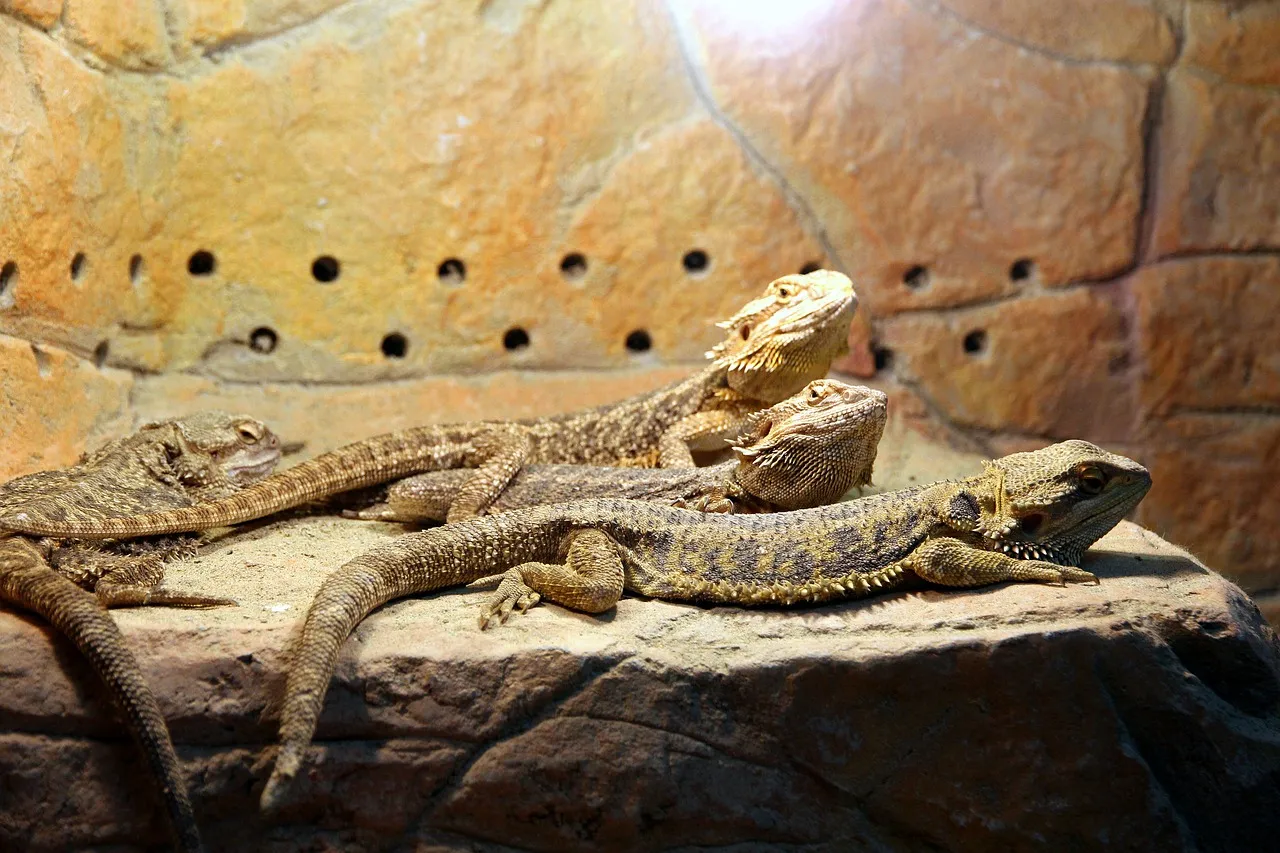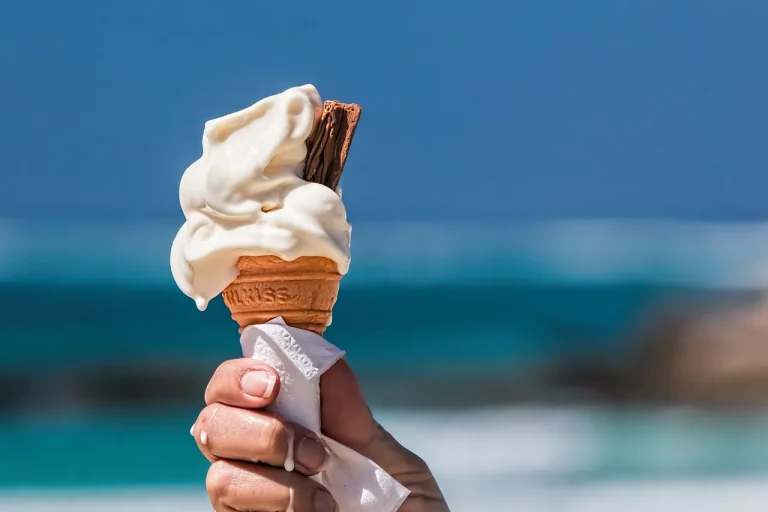Keeping Bearded Dragons As Pets In Florida: What You Need To Know
With their docile nature and unique, prehistoric looks, it’s no wonder bearded dragons are a popular pet reptile. If you live in Florida and are considering a ‘beardie’ companion, you probably have some questions.
In short: Yes, you can keep bearded dragons as pets in Florida, but there are some important factors to consider regarding their habitat setup, heating and lighting needs, diet, and more to keep them healthy in the state’s hot, humid climate.
In this comprehensive guide, we’ll cover everything potential bearded dragon owners in Florida need to know, including:
Bearded Dragon Natural History and Origins
Bearded dragons, scientifically known as Pogona vitticeps, are fascinating reptiles that make for unique and captivating pets. Understanding their natural history and origins can help you provide the best care for your bearded dragon. Here are some key points to know:
Native to Australia
Bearded dragons are indigenous to Australia, where they can be found in various regions across the country. They have adapted to the harsh Australian environment and have become one of the most popular reptile pets worldwide.
👍👏Their popularity as pets can be attributed to their docile nature, unique appearance, and relatively easy care requirements.
View this post on Instagram
Live in arid woodlands and deserts
In their natural habitat, bearded dragons inhabit arid woodlands, deserts, and shrublands. They are well-adapted to the harsh conditions of these environments, with their ability to regulate their body temperature and survive in areas with limited water resources.
🌵🦎Their ability to thrive in arid regions makes them suitable pets for those living in dry climates, such as Florida. However, it’s important to provide a proper enclosure with the right temperature and humidity levels to ensure their well-being.
Diurnal lizards
Bearded dragons are diurnal creatures, which means they are most active during the day. In their natural habitat, they spend their mornings basking in the sun to warm up their bodies and then forage for food throughout the day.
🌞☀️As pet owners, it’s important to replicate their natural day-night cycle by providing a suitable lighting setup in their enclosure. This includes a combination of UVB lighting for proper calcium absorption and a heat source to maintain the ideal temperature gradient.
🔆It’s worth mentioning that bearded dragons are known for their distinctive “beard” – a pouch of skin located under their chin that can puff up and change color depending on their mood or level of stress. This unique feature adds to their charm and makes them even more intriguing as pets.
View this post on Instagram
For more information on bearded dragon natural history and origins, you can visit reputable websites such as Bearded Dragon.org.
Setting Up the Right Enclosure
Creating the perfect enclosure for your bearded dragon is crucial to their health and well-being. Here are some important factors to consider:
Minimum size requirements
Bearded dragons require a spacious enclosure to thrive. The minimum recommended size for a single adult bearded dragon is a 50-gallon tank. However, providing a larger enclosure, such as a 75-gallon tank or larger, will give your pet more room to explore and exercise.
Remember, the bigger the better when it comes to their living space!
View this post on Instagram
Proper substrates to use
Choosing the right substrate is important for maintaining a clean and healthy environment for your bearded dragon. Avoid using loose substrates, such as sand or wood chips, as they can be ingested and cause impaction. Instead, opt for non-particulate substrates like reptile carpet or paper towels.
These options are easy to clean and reduce the risk of digestive issues.
Lighting, heating, and humidity needs
Bearded dragons are ectothermic creatures, meaning they rely on external heat sources to regulate their body temperature. Provide a basking spot with a temperature range of 95-105°F (35-40°C) and a cooler area around 80°F (27°C).
You’ll need a heat lamp and a UVB light to simulate sunlight and enable vitamin D synthesis.
It’s important to monitor and maintain proper humidity levels in the enclosure. Aim for a humidity range of at least 30% to 35-40%. This can be achieved by misting the enclosure with water and using a hygrometer to measure humidity levels.
Proper lighting, heating, and humidity are essential for your bearded dragon’s overall health and well-being.
For more detailed information on setting up the right enclosure for your bearded dragon, you can refer to the following website: www.beardeddragon.org. They provide comprehensive guides and resources for bearded dragon owners.
Feeding and Diet Requirements
Proper nutrition is essential for the health and well-being of your bearded dragon. Here are some important considerations when it comes to feeding and diet:
Greens, veggies, fruits
Bearded dragons are omnivores, meaning they eat both plants and animals. A significant portion of their diet should consist of leafy greens, vegetables, and fruits. These provide essential vitamins, minerals, and fiber.
Some recommended greens and vegetables include collard greens, mustard greens, kale, and squash. Fruits such as berries, melons, and apples can also be offered as occasional treats. It’s important to vary their diet to ensure they receive a wide range of nutrients.
View this post on Instagram
Insects, calcium powder
Along with plant-based foods, bearded dragons require a source of animal protein. Insects like crickets, mealworms, and dubia roaches are popular choices. These should be gut-loaded (fed a nutritious diet) before being offered to your pet.
Additionally, it’s crucial to dust the insects with calcium powder to provide the necessary calcium and vitamin D3 for healthy bone growth and maintenance. Calcium supplements with added vitamin D3 can also be provided orally.
Foods to avoid
While it’s important to offer a varied diet, there are some foods that should be avoided for the safety of your bearded dragon. These include toxic plants like rhubarb, avocado, chives, eggplants and onion. Additionally, foods high in oxalates, such as spinach and beet greens, should be fed in moderation as they can interfere with calcium absorption.
It’s also important to avoid feeding your bearded dragon insects caught in the wild, as they may have been exposed to pesticides or parasites.
Supplements
Supplements play a crucial role in meeting the nutritional needs of bearded dragons. In addition to calcium powder, they may also require a multivitamin supplement to ensure they receive all the necessary vitamins and minerals.
It’s important to follow the recommended dosage guidelines and consult with a reptile veterinarian to determine the appropriate supplementation for your pet.
View this post on Instagram
Caring for and Handling Your Bearded Dragon
Creating a routine
Establishing a regular routine is essential for the well-being of your bearded dragon. These reptiles thrive on consistency and feel more secure when they know what to expect. Set up a schedule for feeding, cleaning, and socializing with your pet.
This will help them feel safe and comfortable in their environment.
Regular tank maintenance
Maintaining a clean and healthy tank is crucial for your bearded dragon’s health. Regularly clean the tank by removing any waste, uneaten food, and debris. Replace the substrate regularly and ensure that the temperature and humidity levels are appropriate for your reptile.
Regular tank maintenance will help prevent the growth of harmful bacteria and keep your bearded dragon happy and healthy.
Bathing and nail trims
Bathing your bearded dragon is not only a great way to keep them clean but also provides them with necessary hydration. Fill a shallow dish with lukewarm water and allow your reptile to soak for about 10-15 minutes. This can also help with shedding and prevent dry skin.
View this post on Instagram
Additionally, regular nail trims are important to prevent overgrown and sharp nails that can cause injury to you, your pet, or other animals. Seek guidance from a veterinarian or reptile expert on how to properly trim your bearded dragon’s nails.
Safely handling your reptile
Handling your bearded dragon requires some caution and care. Start by gently scooping them up from underneath, supporting their body and tail. Avoid grabbing or squeezing them, as this can cause stress or injury.
It’s important to wash your hands before and after handling to prevent the spread of bacteria. Always supervise interactions with children and other pets to ensure the safety of both your bearded dragon and those around them.
Keeping Your Bearded Dragon Healthy
Bearded dragons are fascinating reptiles that can make wonderful pets. However, it is important to ensure the health and well-being of your bearded dragon. By being aware of the signs of illness, common health issues, finding an exotic vet, and practicing disease prevention, you can help keep your bearded dragon happy and healthy.
Signs of illness
It is essential to closely monitor your bearded dragon for any signs of illness. Some common signs to look out for include:
- Loss of appetite
- Weight loss
- Lethargy or weakness
- Changes in behavior
- Respiratory problems
- Swollen or discolored skin
- Puffy, bulging, or swollen eyes
- Diarrhea or constipation
- Discharge from the eyes, ears, nose, or mouth
If you notice any of these signs or any other concerning symptoms, it is important to consult with a veterinarian who specializes in exotic pets.
Common health issues
While bearded dragons are generally hardy pets, they can still experience health issues. Some common health issues in bearded dragons include:
- Metabolic bone disease: This occurs when the dragon’s body does not get enough calcium and vitamin D3, leading to weakened bones.
- Parasites: Bearded dragons can be affected by internal and external parasites, such as mites and worms.
- Respiratory infections: These can occur due to improper temperature and humidity levels in the enclosure.
- Gastrointestinal issues: Bearded dragons may experience impaction or digestive problems if they ingest substrate or inappropriate food items.
If you suspect that your bearded dragon is experiencing any health issues, it is crucial to seek veterinary care as soon as possible. Prompt treatment can often prevent further complications and improve the chances of a full recovery.
Finding an exotic vet
When it comes to the health of your bearded dragon, it is important to find a veterinarian who specializes in exotic pets. These veterinarians have the necessary knowledge and experience to properly care for reptiles like bearded dragons.
You can ask for recommendations from other reptile owners or search online directories for exotic vet clinics in your area.
View this post on Instagram
Disease prevention
Preventing diseases in bearded dragons is essential for their overall well-being. Here are some tips to help keep your bearded dragon healthy:
- Maintain proper temperature and humidity levels in the enclosure.
- Provide a balanced diet consisting of appropriate insects, vegetables, and occasional fruits.
- Keep the enclosure clean and provide a suitable substrate to prevent impaction.
- Quarantine any new reptiles before introducing them to your bearded dragon to prevent the spread of diseases.
- Regularly clean and disinfect the enclosure and its accessories.
By following these guidelines and regularly monitoring your bearded dragon’s health, you can significantly reduce the risk of illness and ensure a long and happy life for your scaly friend.
Conclusion
While beardies can make great pets for Florida residents who provide the proper habitat and care, they do require some specialized needs. With the right enclosure setup, heating, hydration, diet, and handling, bearded dragons can thrive in the Sunshine State.








